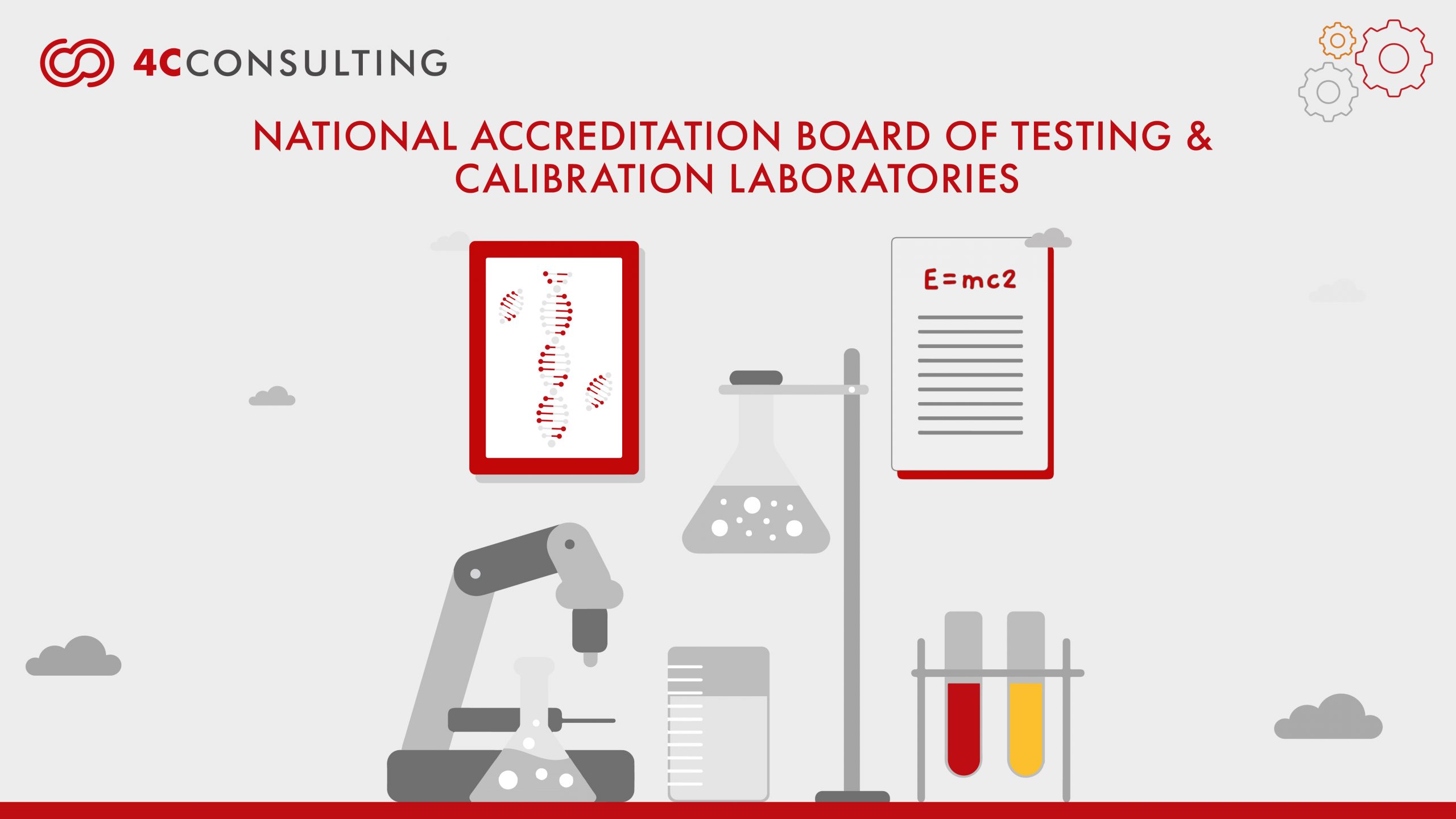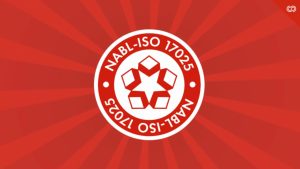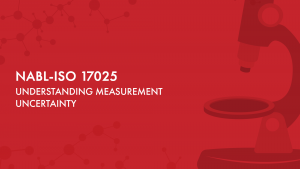
PROFICIENCY TESTING: KEY TO ACHIEVING NABL 17025 ACCREDITATION
21st Jun, 2024
In the highly regulated field of laboratory testing, proficiency testing is essential for maintaining the integrity and reliability of results. Laboratories seeking NABL (National Accreditation Board for Testing and Calibration Laboratories) 17025 accreditation must demonstrate their competence through rigorous proficiency testing programs. This process not only ensures compliance with international standards but also enhances the credibility and operational efficiency of the laboratories. This blog delves into the intricacies of proficiency testing, its significance in the NABL 17025 accreditation process, and the steps involved in effectively implementing it.
.
WHAT IS PROFICIENCY TESTING?
Proficiency testing is a formal process used to evaluate a laboratory’s performance by comparing its test results with those from other laboratories or against pre-established criteria. The process involves the distribution of samples with known characteristics by an external proficiency testing provider. Participating laboratories analyze these samples using their standard methods and report the findings to the provider. The results are then assessed to determine the accuracy and reliability of each laboratory’s performance.
The main objectives of proficiency testing are:
1. QUALITY ASSURANCE:
Ensuring that the laboratory’s test results are accurate and consistent over time is vital for maintaining high standards. Quality assurance (QA) includes activities designed to ensure that results are reliable and meet specified requirements. Key elements include:
- Establishing standard operating procedures (SOPs)
- Regular calibration and maintenance of equipment
- Conducting internal audits
- Continuous staff training and competency assessments
.
2. COMPETENCE VALIDATION:
Demonstrating that the laboratory can produce reliable results within its accreditation scope is crucial for trust and credibility. Competence validation involves a systematic approach to prove technical expertise and consistent accuracy. Key components include:
- Participation in proficiency testing programs
- External assessments by accreditation bodies like NABL
- Maintaining detailed records of all testing activities
.
3. PROCESS IMPROVEMENT:
Identifying areas where testing procedures need enhancement and providing feedback for continuous improvement is key to laboratory excellence. Process improvement focuses on efficiency and effectiveness to ensure high-quality outcomes. Key strategies include:
- Regular review and analysis of procedures
- Implementing corrective and preventive actions (CAPA)
- Leveraging technological advancements
- Engaging with stakeholders for feedback
Proficiency testing is crucial for laboratories, helping identify weaknesses and enabling prompt corrective actions. This feedback loop maintains high testing standards and ensures reliable results. By focusing on QA, competence validation, and process improvement, laboratories can meet the highest standards, enhancing result reliability and credibility, and fostering trust among clients and regulatory bodies.
.
.
Strengthen Lab Competence and Accuracy with Proficiency Testing.
IMPORTANCE OF PROFICIENCY TESTING IN NABL 17025 ACCREDITATION
NABL 17025 accreditation is an internationally recognized standard that specifies the general requirements for the competence of testing and calibration laboratories. Achieving this accreditation signifies that a laboratory operates with a high level of technical competence and produces accurate and reliable results. Proficiency testing is a key element in this accreditation process for several reasons:
- Compliance with Standards: Proficiency testing is a mandatory requirement for laboratories seeking NABL 17025 accreditation. It demonstrates that the laboratory complies with the international standards for testing and calibration.
- Verification of Competence: Participation in proficiency testing programs allows laboratories to validate their testing capabilities. It confirms that the laboratory can consistently produce accurate results, which is a critical factor in achieving and maintaining accreditation.
- Continuous Improvement: Regular proficiency testing helps laboratories identify areas for improvement in their testing processes. By analyzing the results and implementing corrective actions, laboratories can enhance their overall quality and reliability.
- Enhanced Credibility: Successfully participating in proficiency testing enhances a laboratory’s credibility and reputation. Clients and regulatory bodies gain confidence in the laboratory’s results, knowing they meet rigorous standards.
- Benchmarking Performance: Proficiency testing provides an opportunity for laboratories to benchmark their performance against peers. This comparative analysis helps laboratories understand their position within the industry and strive for excellence.
- Operational Efficiency: Proficiency testing can identify inefficiencies in laboratory processes. By addressing these inefficiencies, laboratories can streamline operations, reduce errors, and improve overall workflow. This leads to more efficient use of resources and better allocation of staff time.
- Risk Management: Proficiency testing helps laboratories identify and mitigate risks associated with testing inaccuracies. Early detection of potential issues through proficiency testing enables laboratories to take preventive measures, reducing the likelihood of costly mistakes and enhancing overall risk management.
.
HOW TO IMPLEMENT PROFICIENCY TESTING?
Implementing proficiency testing in a laboratory setting involves several systematic steps to ensure effectiveness and compliance with NABL 17025 requirements. Here’s a detailed guide on how laboratories can implement proficiency testing:
- Selecting a Proficiency Testing Provider: Choose a reputable proficiency testing provider that offers programs relevant to the laboratory’s scope of testing. The provider should have a proven track record and comply with international standards for proficiency testing.
- Participation in Proficiency Testing Programs: Enroll in proficiency testing programs that align with the laboratory’s testing capabilities and accreditation requirements. Ensure that the chosen programs cover the critical areas of testing that need evaluation.
- Sample Analysis: Upon receiving the proficiency testing samples, analyze them using the laboratory’s standard operating procedures. Ensure that the analysis is conducted under normal testing conditions to reflect the laboratory’s routine performance.
- Result Reporting: Submit the test results to the proficiency testing provider within the specified timeframe. Ensure that all data is accurately recorded and reported as per the provider’s guidelines.
- Result Evaluation: The proficiency testing provider will evaluate the laboratory’s results against known values or the performance of other participating laboratories. This evaluation helps determine the accuracy and reliability of the laboratory’s performance.
- Receiving Feedback: Review the feedback provided by the proficiency testing provider. This feedback includes a detailed analysis of the laboratory’s performance and highlights areas that may need improvement.
- Implementing Corrective Actions: If the proficiency testing results indicate any discrepancies or areas of concern, implement corrective actions promptly. This may involve revising testing procedures, retraining staff, or updating equipment.
- Documentation and Record-Keeping: Maintain comprehensive records of all proficiency testing activities, including sample analysis, results, feedback, and corrective actions. This documentation is crucial for demonstrating compliance during NABL 17025 audits.
- Continuous Monitoring: Regularly participate in proficiency testing programs to ensure ongoing compliance and continuous improvement. Periodic assessment helps laboratories stay updated with industry standards and maintain high levels of performance.
.
BENEFITS OF IMPLEMENTING PROFICIENCY TESTING
The benefits of proficiency testing extend far beyond meeting accreditation requirements. Here are some of the key advantages that laboratories can gain from participating in proficiency testing:
- Improved Quality Assurance: Proficiency testing ensures that test results are accurate, reliable, and consistent, thereby enhancing the overall quality assurance framework of the laboratory.
- Regulatory Compliance: Participation in proficiency testing helps laboratories comply with national and international regulatory standards, reducing the risk of non-compliance and potential penalties.
- Customer Confidence: Clients and stakeholders gain confidence in the laboratory’s capabilities, knowing that it has demonstrated competence through proficiency testing. This can lead to increased business opportunities and client retention.
- Operational Efficiency: By identifying and addressing weaknesses in the testing process, laboratories can streamline their operations, reduce errors, and improve overall efficiency.
- Market Competitiveness: Laboratories that participate in proficiency testing can differentiate themselves in the marketplace by showcasing their commitment to quality and reliability. This competitive advantage can attract more clients and partnerships.
- Risk Management: Proficiency testing helps laboratories identify potential risks in their testing procedures. By addressing these risks proactively, laboratories can prevent errors and avoid costly rework or legal issues.
- Benchmarking and Performance Improvement: Comparative analysis of proficiency testing results allows laboratories to benchmark their performance against industry peers. This benchmarking helps laboratories set performance goals and strive for continuous improvement.
- Accreditation Maintenance: Ongoing participation in proficiency testing is essential for maintaining NABL 17025 accreditation. It demonstrates the laboratory’s commitment to continuous improvement and adherence to accreditation standards.
Proficiency testing is an indispensable tool for laboratories aiming to achieve and maintain NABL 17025 accreditation. It ensures that laboratories meet the high standards required for accreditation and continuously improve their testing processes. By participating in proficiency testing, laboratories can demonstrate their competence, enhance their credibility, and achieve greater accuracy and reliability in their test results. Embracing proficiency testing is not just about fulfilling a requirement—it’s about committing to excellence in laboratory testing. Incorporating proficiency testing into the laboratory’s quality management system not only supports accreditation efforts but also fosters a culture of continuous improvement. Laboratories that prioritize proficiency testing can build stronger reputations, attract more clients, and ultimately contribute to the advancement of the testing and calibration industry.
.
HOW 4C CAN FACILITATE FOR NABL-ISO 17025 ACCREDITATION?
4C team includes renowned ISO 17025 consultants who are also NABL qualified so that they possess the expertise to empower laboratories with efficient NABL-ISO 17025 implementation and enhance their internal as well as external results for better growth. Having assisted 1000+ labs with NABL-ISO 17025 accreditation, we have gained in-depth knowledge and knack for an efficient NABL-ISO 17025 accreditation that ultimately maximizes your business. We have also facilitated 50+ ILC/PT testing labs for NABL accreditation and learned new techniques for simplified NABL-ISO 17025 accreditation that helps to get the best of the ISO 17025 standard. To step up your business by improving performance, proficiency of testing competencies and internal operational efficiency, Contact our experts now.



